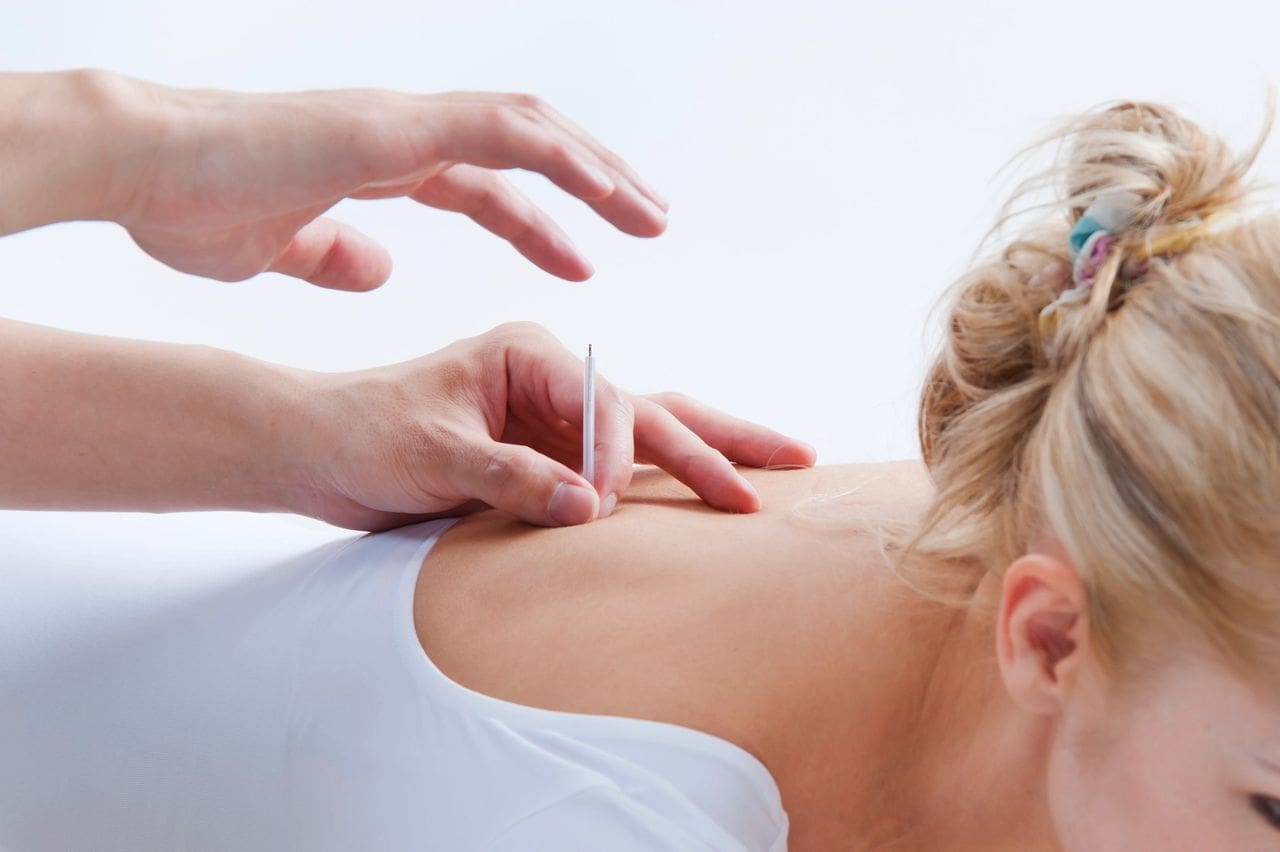
What Is Dry Needling?
Our physical therapists at Dynamic Physical Therapy may recommend Trigger Point Dry Needling as part of your treatment plan. Continue reading for a brief explanation of dry needling and why it may benefit you.
What are trigger points?
Trigger points can develop in muscle tissue after injury, underuse, or overuse. You can think of these tight spots in the muscle as kinked sections of a water hose. When the hose has a kink in it, the water cannot travel through. These kinks in the muscle, or trigger points, limit how well blood can flow throughout the muscle to deliver oxygen and other repair molecules, which are crucial for muscle function and recovery. The presence of trigger points may also alert your pain response system, which is why these muscle knots are often painful.
What is dry needling and how is it different than acupuncture?
Dry needling uses thin needles to break up these trigger points in the muscle, restoring adequate blood flow and reducing pain. Many people are familiar with acupuncture, and the same needles are used for trigger point dry needling; the way the needles are applied is just a bit different. Acupuncture is based on Traditional Chinese medicine, and the needles are applied according to meridians of the body in order to impact energy flow. Dry needling follows principles of Western Medicine, and the needles are inserted based on the location of the trigger points within the muscle. Both can be very beneficial in treating a variety of conditions.
What conditions can dry needling help with?
Conditions that typically respond well to dry needling include neck and back pain, muscle strains such as a rotator cuff injury, hamstring or quad strain, or calf injury, and tension-type headaches, among others.
What does dry needling feel like and what is the recovery?
During the dry needling treatment, a patient can expect to feel a deep aching/cramping sensation, involuntary twitches in the treated muscle, and symptom referral to areas separate from the muscle being treated. It is also normal to feel sweaty or clammy. Pain is extremely subjective and the intensity of the symptoms elicited by dry needling varies between people, but your therapist will ensure you are comfortable with the pace of the needling. After the treatment is complete, the patient may notice an immediate improvement in their range of motion/flexibility, but over the next 24 hours they will likely experience increased tightness in the muscle. I like to prepare patients by telling them that their symptoms may feel a little worse before they feel better. However, within a day or two, those tight and painful spots should loosen up. People may need several treatments of dry needling throughout their physical therapy plan of care in order to maintain the positive benefits. You’ll also get the greatest benefit when combined with other skilled treatments such as manual interventions, exercise prescription, and education surrounding postural, ergonomic, or lifestyle modifications.
Check out our YouTube video for a demonstration of dry needling!
If dry needling sounds like something you may be interested in, schedule a comprehensive evaluation with one of our physical therapists today! Contact us at (312) 643-1555 or email info@dynamic-PT.com.
